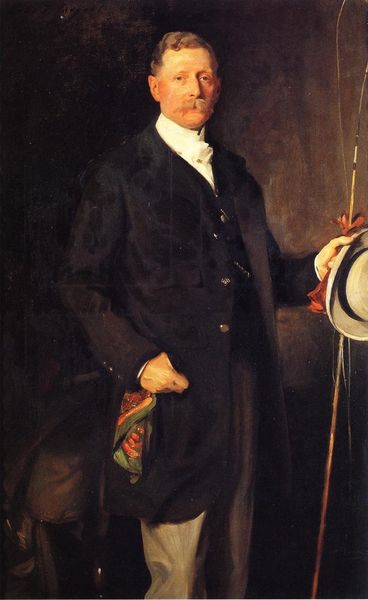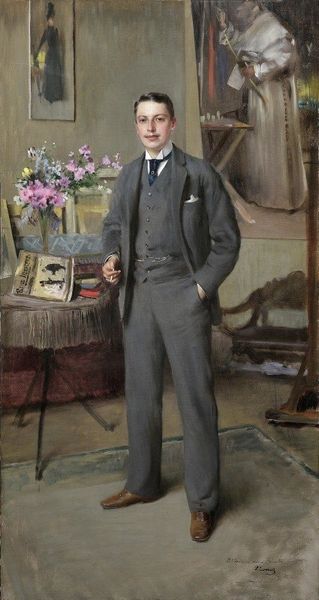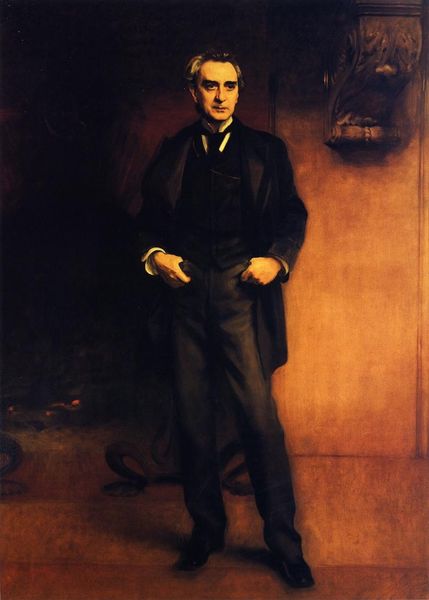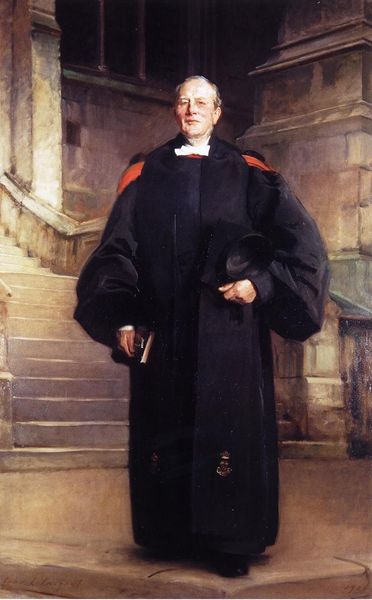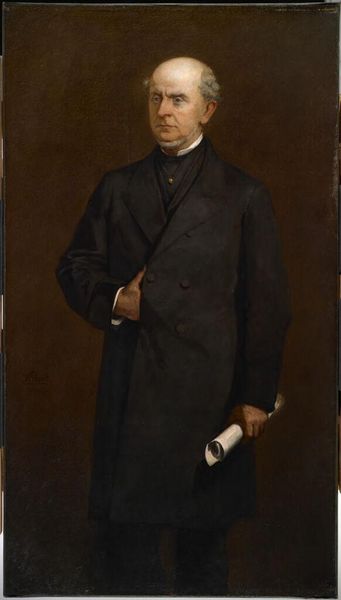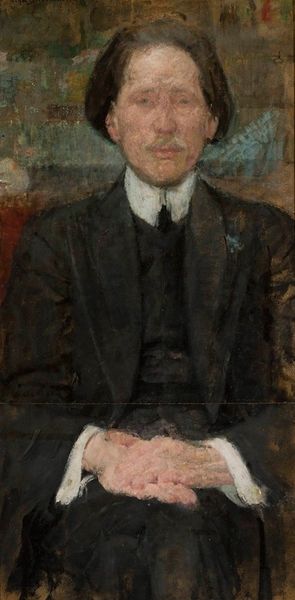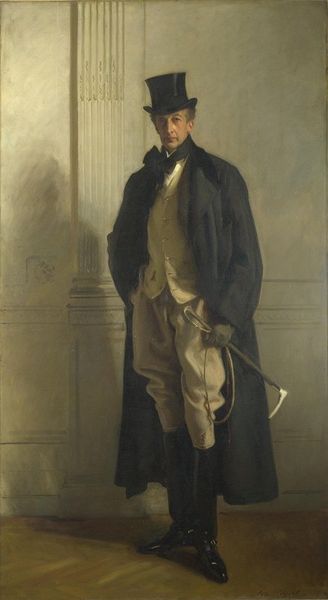
Copyright: Public Domain: Artvee
Curator: Standing before us, we have John Singer Sargent's "Joseph," completed in 1896, an oil-on-canvas portrait embodying both realism and elements of Romanticism. Editor: Oh, he looks like he's swallowed a bumblebee! The monocle, the flower… so utterly poised and controlled. You can practically hear him clearing his throat, can't you? Curator: Indeed. Sargent, renowned for his society portraits, seems to have focused on representing not just the likeness but the social standing of his sitters. Consider the choice of oil paint, a traditionally valued material that enhances texture and gives permanence. The man's suit—likely bespoke, given the time period. All symbols of class. Editor: Absolutely. But there’s something unsettling in his grip on those papers too. Like they're both precious and disposable all at once. They suggest labor, maybe legal documents... all sorts of dry, material concerns hidden beneath the flower. Gives it a bit of an edge, doesn't it? Curator: Precisely. Note Sargent's brushwork. While his earlier works might show looser, more impressionistic strokes, here he balances detail with painterly expression. Think of the way he suggests the fabric’s sheen. How would this portrayal function for its intended audience and what would its cost have been for labor and materials? Editor: You're right. The fabrics especially give him that solid presence. Funny how we can practically smell the beeswax and turpentine, even from here! Sargent’s paintings really trap moments like this and let them…ferment. Is it the end or the beginning of something? Curator: His placement and execution undoubtedly elevate the sitter and it may well immortalize something ineffable about that specific moment in time. Editor: He's holding more than papers; it’s also status. Power dynamics painted onto canvas, immortalized in oil… Heavy stuff when you really let it land, and very evocative!
Comments
No comments
Be the first to comment and join the conversation on the ultimate creative platform.
